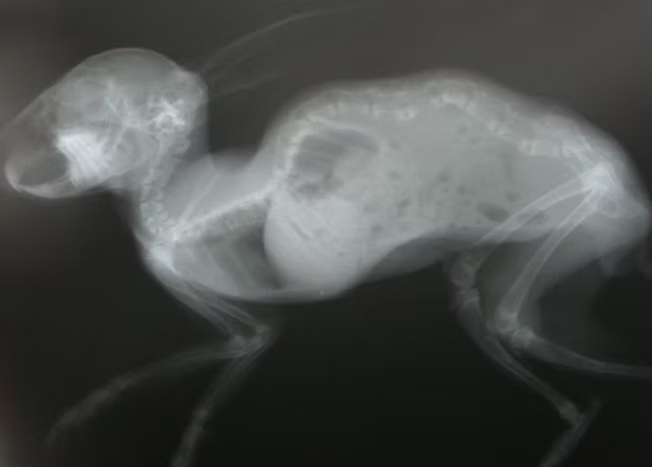Metabolic Bone Disease (MBD) in Pet Squirrels

Metabolic Bone Disease (MBD) is one of the most common and preventable health issues in pet squirrels. It’s typically caused by an improper diet—especially one heavy in nuts, seeds, or corn. While squirrels love these foods, they are high in phosphorus and low in calcium, which can dangerously throw off the body’s mineral balance.
What Causes MBD?
The body needs both calcium and phosphorus to grow strong, healthy bones. But the balance matters—too much phosphorus can block calcium absorption. This creates a calcium deficiency, which the squirrel’s body tries to make up for by pulling calcium from its bones and teeth, leading to painful, brittle bones.
Important: MBD can begin developing in as little as one week if your squirrel isn’t getting proper nutrition.
Early Signs of MBD
Early symptoms of MBD in squirrels may be subtle, so careful observation is key. Watch for:
- Unusual aggression or crankiness
- Lethargy or excessive sleeping
- Limping or reluctance to climb or jump
- Swollen joints or visible deformities
- Loss of appetite or difficulty chewing
- Labored breathing or twitching
If left untreated, MBD can lead to fractures, paralysis, seizures, and even death.
How to Prevent MBD in Adopted Squirrels
1. Feed a Balanced Diet
Squirrels are like toddlers they’ll choose the “treats” (nuts and corn) if you let them. You must guide their diet carefully.
Recommended Diet Breakdown:
- 80% high-quality rodent or squirrel block (like Henry’s Healthy Blocks or Mazuri Rodent Diet)
- 20% fresh vegetables and fruits with a proper calcium-to-phosphorus ratio (ideally 2:1)
Avoid giving:
- Almonds, peanuts, sunflower seeds, or corn as staple foods
- Sugary treats, cookies, or processed snacks
- Dog or cat food
📌 Tip: Rotate calcium-rich veggies like kale, dandelion greens, bok choy, and broccoli.
2. Provide Sunlight or UV Lighting
Squirrels need Vitamin D to absorb calcium. In nature, they get it from daily exposure to natural sunlight.
If your squirrel stays indoors:
- Ensure at least 20 minutes of unfiltered sunlight per day (through a screened window or in a safe outdoor play area)
- Or use a UVB or full-spectrum light designed for reptiles or small mammals
Never use Vitamin D supplements without veterinary guidance too much can be toxic and fatal.
What Is the Ca:P Ratio (Calcium-to-Phosphorus)?
Calcium and phosphorus work together to build strong bones. The ideal ratio is 2:1 (twice as much calcium as phosphorus). When that balance is off even if you’re feeding a lot of food your squirrel can develop bone thinning, pain, and fractures.
For every unit of phosphorus consumed, a squirrel needs an equal or greater unit of calcium or it will pull calcium from its skeleton.
Can MBD Be Reversed?
Yes if caught early. A squirrel with mild symptoms can often recover with:
- A corrected diet
- Adequate sunlight or UVB light exposure
- Veterinary-recommended calcium support
- Monitoring for pain or signs of fracture
However, severe or advanced cases may lead to permanent damage or require lifelong care.
Final Tips for Squirrel Parents
Provide safe enrichment that encourages climbing and activity (which builds strong bones)
Don’t allow your squirrel to eat only nuts or seeds—no matter how much they love them
Learn to read food labels and research calcium/phosphorus content
Weigh your squirrel regularly to ensure proper growth

